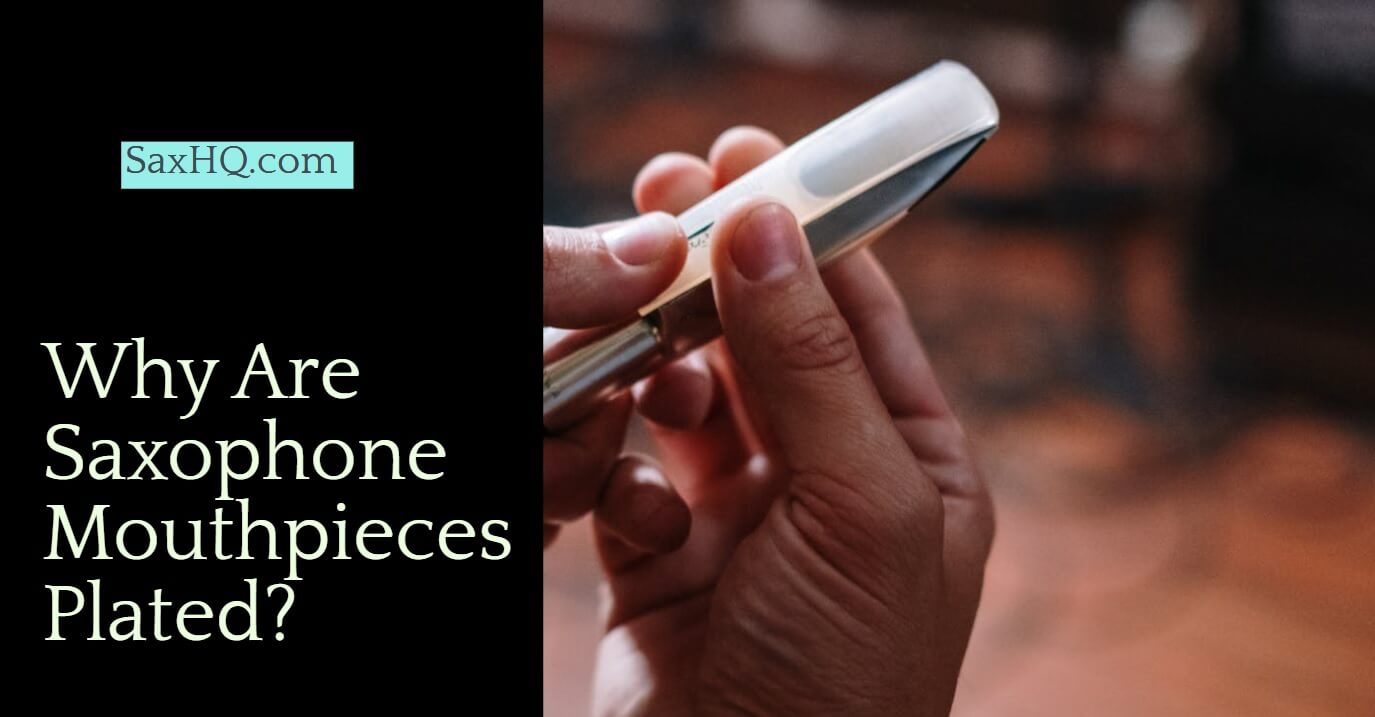As you may well know, the plating and finishing of a saxophone definitely has an impact on how the instrument sounds. Silver-plated ones have a higher-sounding pitch to them than gold-plated ones, but does the same apply for mouthpieces?
The short answer is no. So, why would manufacturers bother plating mouthpieces and putting in that extra cost? Let’s delve into this head-scratcher.
Table of Contents
Why are Saxophone Mouthpieces Plated?
The main reason mouthpieces are plated is because this plating covers the raw copper or brass that the mouthpiece is made of, and playing on these metals rawly could have major health repercussions. These include metallic poisoning like brass poisoning, lead leaching, and allergic reactions.
That’s why when your plating starts wearing away, say because the bite plate has fallen off, you should look into replating the mouthpiece before you start playing it again.
However, replating isn’t the only process that the mouthpiece has to go through when the plating starts wearing away, there’s also refacing, and not every specialist that does replating also does refacing.
Not to mention, there’s a risk that if the specialist doesn’t have a lot of expertise, refacing could negatively affect the way the mouthpiece sounds. That’s why you should make sure that the service you opt for has solid ratings, is well-established, and has been up and running for a good while in order for the repairmen to have experience.
Is There an Alternative to Replating?
If you don’t want to go through the hassle of looking for a trusted replating service, you can always opt for mouthpiece patches, and I would highly recommend those for a couple of reasons.
1. Comfort
Patches give you a lot more comfort when biting into the tip of the mouthpiece than the hard metal of the beak. This is especially helpful if you want to get the hang of your embouchure, so, naturally, patches are an amazing option for beginners.
Must Read: Best ligatures for the Yamaha 4C mouthpiece
2. Vibration
MPC patches help a lot in reducing vibrations while biting down on the beak, which in turn gives your playing more stability and gives you more control over embouchure.
3. Damage
The last and most important benefit is that patches take all the damage that wears out the mouthpiece and eventually decays the plating. This means that you can bite down as hard as you want without having to worry about maintenance later on or until you know just the right amount of pressure you would like to apply when playing.
Mouthpiece patches have an easy self-adhesion application technique, and they’re quite easily replaced. Typically, they come in packs of 6, and some of the best options on the market would be the Rico RMP01B or the more premium Vandoren VMC6.
You’ll typically find the patches in two sizes, 0.4mm and 0.8mm ones. The former are thinner but harder while the latter’s thickness makes them more comfortable to bite.
Related: why are alto sax mouthpieces so expensive?
How to Apply Mouthpiece Patches?
First, you should clean your mouthpiece thoroughly by using soap and water. You can also immerse it in hydrogen peroxide for a minute to disinfect it as well.
Keep in mind, however, that you should be careful with the chemicals you use so that they don’t affect the metal plating. Also, use warm water because if the water is too hot, it could discolor your mouthpiece.
Then, peel the patch off and make sure to keep your fingers away from the adhesive. After that, leave a couple of millimeters at the tip and align the patch with the mouthpiece beak. Finally, firmly press down on the patch to keep it in place and start practicing.
Final Words
So, the long story short is that platings on mouthpieces are highly important and are a must-have safety precautionary measure. However, they don’t affect the sound, except for slight cases where players can hear a difference between a certain brand or line’s sound when switching between their silver and gold options.
Still, this doesn’t apply to the vast majority of mouthpieces, so you can make your choice according to the aesthetic. The most important part is to keep your plating intact, either by constant maintenance or by using a protective patch.


